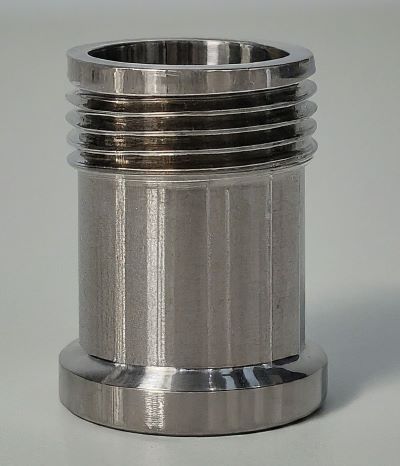Compression ferrules are essential components in countless applications, from plumbing to industrial machinery. While often overlooked, they play a critical role in ensuring leak-free connections. A poorly installed or damaged ferrule can lead to system failures, fluid loss, and potential safety hazards.
In this guide, we’ll delve into the world of compression ferrules, exploring their types, common issues, and expert tips for achieving perfect seals every time.
What are Compression Ferrules?
Compression ferrules are essential components in plumbing, hydraulic, and pneumatic systems. These small, often overlooked parts play a crucial role in ensuring the integrity of fluid or gas lines. They are typically made of metal, such as brass or stainless steel, and are designed to create a secure seal between a tube and a fitting when compressed.
Proper sealing is paramount in these systems. Leaks can lead to system failures, fluid loss, safety hazards, and increased costs. A compromised seal can also cause damage to equipment and components. This blog post will delve into the intricacies of compression ferrules, offering practical tips and tricks to achieve perfect seals every time.
Understanding Compression Ferrules
➡️ Different types of compression ferrules
Compression ferrules come in various shapes and sizes to accommodate different tube and fitting combinations. Common types include:
1. Standard compression ferrules
2. Split compression ferrules
3. Push-to-connect ferrules
➡️ Materials used in ferrules
The material of a ferrule is crucial for its performance. Common materials include:
1. Brass: Offers good corrosion resistance and machinability.
2. Stainless steel: Provides excellent corrosion resistance and strength.
3. Copper: Offers good thermal conductivity and malleability.
➡️ Factors affecting ferrule performance
Several factors influence ferrule performance:
1. Tube material and wall thickness
2. Fitting type and material
3. Installation torque
4. Environmental conditions
Common Sealing Problems
➡️ Leakage issues Leakage is a common problem caused by various factors, including incorrect ferrule size, improper installation, over-tightening, or corrosion.
➡️ Loose connections Loose connections can lead to vibrations, leaks, and potential system failure. They often result from insufficient torque or damage to the ferrule.
➡️ Corrosion Corrosion can weaken the ferrule, leading to leaks and system failure. It is more likely to occur in harsh environments or with incompatible materials.
Tips for Perfect Seals
➡️ Choosing the right ferrule size
Selecting the correct ferrule size is essential for a proper seal. The ferrule should fit snugly inside the fitting and grip the tube securely.
➡️ Proper installation techniques
Follow these steps for optimal installation:
1. Ensure the tube and fitting are clean and free of debris.
2. Insert the tube into the fitting to the desired depth.
3. Slide the ferrule onto the tube.
4. Tighten the fitting using a torque wrench to the specified value.
➡️ Torque specifications
Adhering to recommended torque values is crucial. Over-tightening can damage the ferrule and cause leaks, while under-tightening can result in loose connections.
➡️ Importance of clean fittings
Contaminants on the tube or fitting can prevent a proper seal. Clean all surfaces thoroughly before assembly.
➡️ Preventing over-tightening
Over-tightening can cause the ferrule to deform or crack. Use a torque wrench to avoid this issue.
➡️ Handling different tube materials
Different tube materials require specific considerations. For example, soft copper tubes may require additional support to prevent deformation during tightening.
➡️ Troubleshooting common sealing issues
1. If you encounter leaks, check for proper ferrule installation, torque, and tube/fitting cleanliness.
2. For loose connections, retighten the fitting to the correct torque or replace the ferrule if damaged.
3. To address corrosion, consider using stainless steel ferrules or applying an anti-corrosion coating.
Additional Tips and Tricks
➡️ Ferrule inspection
Regularly inspect ferrules for signs of wear, damage, or corrosion. Replace damaged ferrules promptly.
➡️ Maintenance and replacement
Proper maintenance, including regular inspections and timely replacements, can extend the life of your compression fittings.
➡️ Ferrule compatibility
Ensure compatibility between the ferrule, tube, and fitting materials to prevent corrosion and sealing issues.
➡️ Cost-saving measures
Investing in quality ferrules and tools can prevent costly repairs and downtime. Proper installation techniques can also help reduce maintenance costs.
Conclusion
Compression ferrules are often overlooked but play a critical role in the performance and reliability of fluid and gas systems. By understanding the factors affecting ferrule performance and following proper installation techniques, you can achieve perfect seals and prevent costly problems.
Remember, taking the time to choose the right ferrule, prepare the components properly, and tighten the fitting to the correct torque will save you time and money in the long run.
Post time: Aug-05-2024


